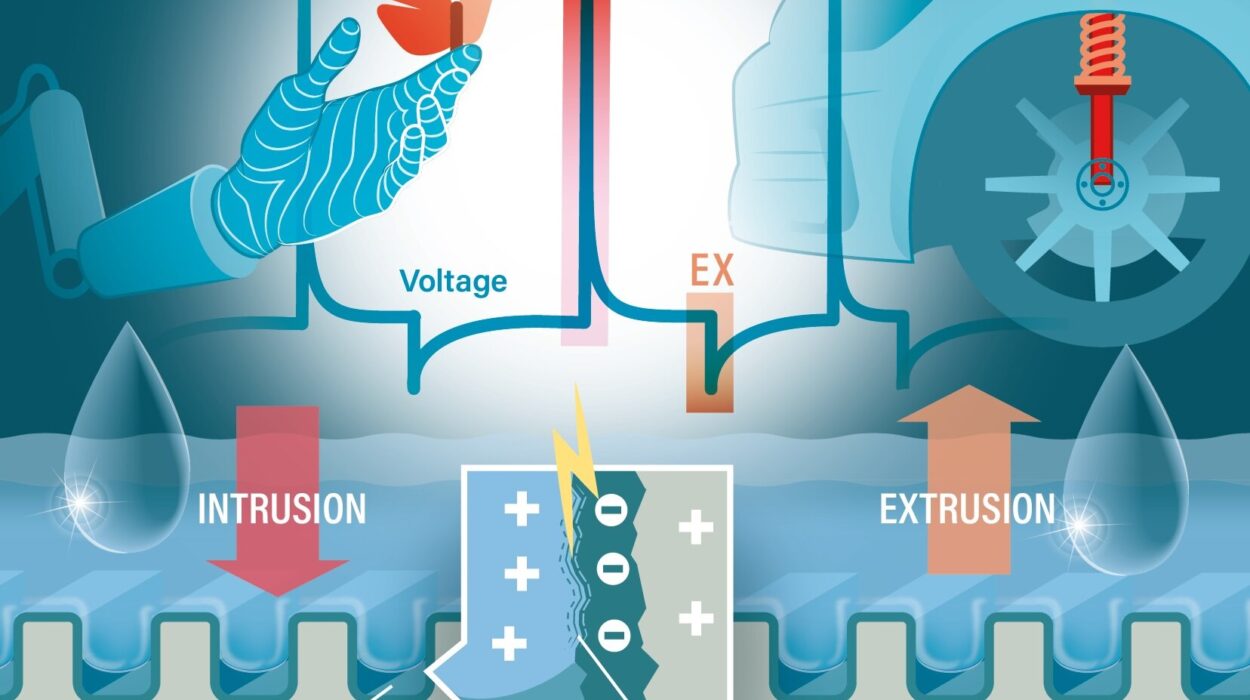In a brightly lit hospital room, a doctor leans over a patient’s bed. On a nearby screen, a machine learning algorithm delivers a prediction: a 92% chance of heart failure within the next 24 hours. The doctor blinks. The numbers are clear, but the reasoning isn’t. She doesn’t know why the AI believes this patient is in danger. The patient’s vital signs are relatively stable, lab results are borderline but not alarming, and there are no overt clinical red flags. Yet, the model is adamant.
Moments like this are becoming more common, not just in healthcare but across every domain touched by artificial intelligence. We have created systems that can recognize faces with uncanny accuracy, translate languages, defeat world champions in complex games, and even compose poetry. But what we haven’t quite figured out is this: how to understand what they’re thinking—if “thinking” is the right word at all.
This is the heart of the AI black box problem. It is the mystery that resides in the hidden layers of deep neural networks and the algebraic jungles of machine learning algorithms. It is the silent gap between input and output, where logic appears to evaporate and only results remain. And in that gap lies not only confusion but potential danger.
A Brief History of Our Mechanical Oracles
Artificial intelligence began with dreams of clarity. In the mid-20th century, computer scientists like Alan Turing and John McCarthy envisioned machines that could think and reason with transparency. Early AI systems were built on rules—long, elaborate chains of if-then statements that tried to mimic human logic. If the temperature is below freezing and the sky is cloudy, then predict snow. These systems were easy to inspect and debug, but they were brittle, limited in scope, and utterly incapable of handling the chaotic variability of the real world.
As computational power grew, so did our ambitions. Instead of programming rules, researchers began training algorithms on data. Instead of giving the machine instructions, they gave it examples. This gave birth to machine learning, and later, to deep learning—a method inspired loosely by the structure of the human brain. By stacking layer upon layer of artificial neurons, these networks could discover patterns invisible to any human analyst.
But in doing so, they became profoundly opaque. Each layer transforms the data in nonlinear ways, forming high-dimensional representations that defy human intuition. Even the engineers who design these networks often can’t explain why a particular decision was made. Like a magician pulling a rabbit from a hat, the model shows you only the output—not the trick that led there.
Trusting What We Don’t Understand
Imagine being in a self-driving car speeding down a highway when it suddenly swerves to avoid what it identifies as a threat. There was no deer, no pedestrian, no visible hazard. Just a flicker of light, perhaps a shadow. The car re-stabilizes, you remain unharmed, but your heart is racing. You ask the car what happened. It doesn’t answer. Or rather, it gives you the answer: “Class probability of collision: 0.841.” Cold numbers, no explanation.
This is the dilemma of black-box AI in safety-critical systems. We are being asked to place trust in tools that may surpass human intelligence in specific domains but lack the ability—or willingness—to explain their choices. In medicine, finance, criminal justice, and even warfare, black-box models are being adopted with increasing speed. But without interpretability, these systems can perpetuate bias, make unaccountable mistakes, and sow public distrust.
The problem isn’t just technical—it’s philosophical. Trust isn’t built on accuracy alone. It’s built on transparency, on the ability to say “why” and be understood. We trust human doctors not just because they make good decisions, but because they can explain them. Remove that explanation, and you remove agency.
Layers of Complexity, Shadows of Meaning
To understand why AI explanations are so elusive, we need to look beneath the hood. A deep neural network is a sprawling architecture of interconnected nodes, each performing a simple mathematical operation. A single node might add two numbers or apply a weight to an input. But stacked together in dozens or hundreds of layers, they become a labyrinth.
Consider an image classification task. The network sees millions of pixels, passes them through filters and transformations, and eventually arrives at a conclusion: “cat” or “dog,” “tumor” or “no tumor.” Somewhere in this abstract universe of features—edges, textures, spatial patterns—the model has learned a representation of what it means to be a cat or a tumor. But that representation doesn’t translate easily into human terms.
You can ask the model, “Why do you think this is a cat?” and it might highlight regions of the image—an ear, a paw, a hint of fur. But these explanations are approximations. They don’t capture the full reasoning chain, because there is no explicit chain. The reasoning is distributed across weights and activations, a symphony of abstract transformations that only make sense when viewed as a whole.
This lack of modular, symbolic reasoning is both the power and the peril of modern AI. It allows for creativity, for pattern recognition beyond human capacity. But it resists introspection. Like a savant who solves a math problem instantly but cannot describe how, the model simply arrives at an answer.
The Illusion of Explanation
Some researchers have attempted to make these systems more explainable. Techniques like LIME (Local Interpretable Model-Agnostic Explanations) and SHAP (SHapley Additive exPlanations) try to estimate which input features contributed most to a decision. Visualizations like saliency maps attempt to show what parts of an image the model focused on. Other methods involve simplifying the model into a decision tree or using surrogate models to approximate its behavior.
But these tools have limitations. They often produce explanations that are plausible but not faithful—meaning they make sense to humans but don’t actually reflect the model’s inner workings. In some cases, they can be gamed, providing misleading justifications. There’s a growing recognition that some AI explanations are more like public relations than science.
This creates a new kind of ethical dilemma. If we show users explanations that aren’t fully accurate, are we deceiving them? If we can’t trust the explanation, how can we trust the decision? In striving to make AI more interpretable, we risk creating the illusion of transparency—a black box painted white.
When Bias Hides in Code
The opacity of AI models also allows bias to thrive undetected. Machine learning algorithms learn from data, and data reflects the world—and the world is unfair. Historical data on hiring, lending, policing, and healthcare is riddled with systemic inequality. If a model is trained on biased data, it will learn to replicate those patterns, often in subtle ways.
Worse, in a black-box model, those patterns may not be visible. A model may deny loans to a disproportionately high number of applicants from a particular zip code, not because it was programmed to discriminate, but because that zip code correlates with income or race. The model finds the correlation, not the cause.
This has already happened. In recent years, AI systems used in U.S. courtrooms to assess recidivism risk have been found to disproportionately flag Black defendants as high-risk, even when controlling for prior offenses. Commercial algorithms used in healthcare have been shown to underestimate the needs of Black patients because they used healthcare spending as a proxy for health—ignoring the fact that access to care is unequal.
In these cases, the black box doesn’t just hide complexity—it hides injustice. It obscures accountability, making it difficult to understand or correct the harm. And because the models are so complex, even well-meaning engineers may be unaware of the biases embedded within.
The Human Cost of Misunderstanding
The consequences of black-box AI are not theoretical. They are deeply human. They show up in denied insurance claims, in wrongful arrests, in job applications filtered out by opaque algorithms. They show up when a student’s essay is flagged as AI-generated by a model that can’t explain why. They show up when a mental health chatbot gives harmful advice because it misunderstood context.
And they show up most painfully in life-and-death situations. A misclassified tumor. A misdiagnosed patient. A failure to flag a suicidal message. In each case, the question haunts us: Could we have prevented this if we understood why the model made its choice?
The emotional toll of these failures is heavy. Victims are often left bewildered, with no recourse. Engineers are left scrambling, unable to debug the system. Regulators face a wall of mathematical opacity. We are building tools that affect millions, and we cannot fully explain how they work.
Is Interpretability Always Necessary?
Some argue that full interpretability is an illusion, or even a distraction. Human cognition is itself a black box. We make decisions based on intuition, emotion, and subconscious processes that we can’t always articulate. We trust doctors and pilots and judges not because they explain every thought, but because of training, experience, and a track record of reliability.
By this reasoning, perhaps AI doesn’t need to explain itself—it just needs to perform well, be rigorously tested, and be held accountable for outcomes. In some domains, this argument carries weight. A model that predicts equipment failure with high accuracy might be valuable even if we can’t fully explain how it works. But in domains involving ethics, rights, or high-stakes decisions, opacity becomes dangerous.
Ultimately, the question is not just technical but moral. What kind of society do we want to live in? One where decisions are made by inscrutable machines? Or one where we preserve the dignity of explanation, of dialogue, of understanding?
The Rise of Explainable AI
In response to growing concern, a movement has emerged: Explainable AI (XAI). It seeks to build models that are more transparent, more accountable, and more aligned with human reasoning. This includes developing new architectures that balance performance and interpretability, as well as tools for auditing, monitoring, and correcting models.
Researchers are exploring hybrid systems that combine neural networks with symbolic reasoning, or that allow users to interact with the model and ask questions. Regulators are beginning to demand transparency, especially in sectors like healthcare, finance, and education. And ethicists are working to establish principles that prioritize fairness, accountability, and respect for human autonomy.
Yet the path is not easy. There is often a trade-off between accuracy and interpretability. The most powerful models—like large language models and transformer-based systems—are often the least explainable. And as AI grows more complex, the challenge of understanding its decisions grows exponentially.
A Future in the Grey
So where does that leave us? We live in a world increasingly shaped by decisions made in the shadows of silicon. The black box problem is not going away anytime soon. But perhaps it does not need to be solved entirely to be addressed meaningfully.
We can demand transparency not in the sense of full comprehension, but in the sense of visibility, oversight, and accountability. We can design systems that flag uncertainty, that allow human override, that document their training data and objectives. We can build a culture of responsible AI—where explainability is not an afterthought but a cornerstone.
Most importantly, we can remember that AI is not magic. It is a tool, created by humans, shaped by human values, and subject to human judgment. The black box is not a sacred artifact. It is a challenge—technical, ethical, and emotional—that calls for humility, courage, and care.
Closing the Box Without Losing Ourselves
In the end, the AI black box problem is not just about models. It is about ourselves. It is about how we define intelligence, trust, and justice. It is about whether we are willing to accept mystery in our machines—or whether we will demand the clarity that democracy requires.
Perhaps there will always be some darkness inside the machine. But we can illuminate its surroundings. We can build bridges between code and conscience. We can demand not just smarter machines, but more humane systems.
And maybe, just maybe, we can teach our algorithms to speak—not just in numbers, but in reasons. Not just in predictions, but in principles. Not just in outputs, but in understanding.






